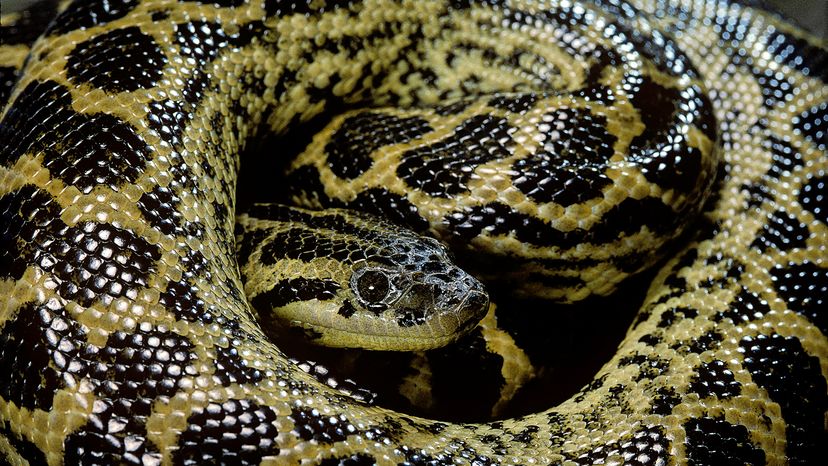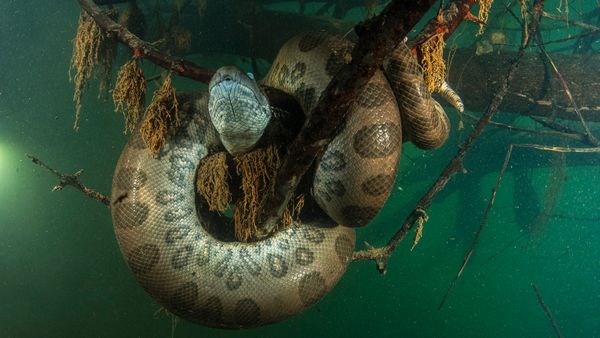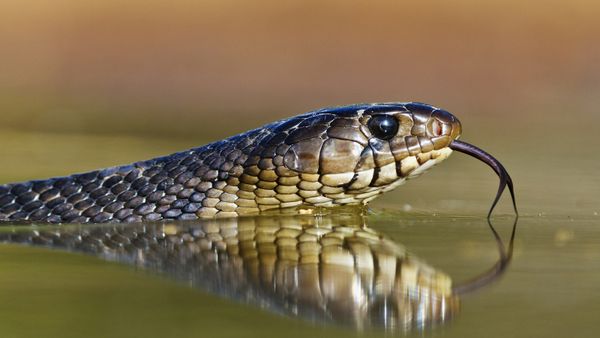During the mating season, which occurs in April and May, females attract mates through a combination of chemical and behavioral signals. The primary method is through the release of pheromones, which are chemical signals that can be detected by multiple males over considerable distances.
These pheromones signal the female's reproductive status and readiness to mate. This chemical communication is crucial in the dense, often visually obstructed marshes and swamps where yellow anacondas often live.
In addition to chemical cues, the female may exhibit certain behaviors or movements that indicate her receptiveness to mating, though this aspect is less understood than chemical signaling.
A Prolonged Breeding Ball
Once the males locate the pheromone-emitting female, they converge on her location and form a breeding ball. This entangled mass of snakes occurs when males coil around each other — and the female — creating a complex knot of bodies.
The size of the breeding ball can vary, ranging from a small cluster to a large, intertwined mass, sometimes involving a dozen or more snakes.
This dynamic tangle of snakes stays in constant motion, with each male striving to get closer to the female. They wrestle and vie for position, attempting to maneuver themselves into a spot favorable for mating.
The male anacondas often form breeding balls in or near water, and this convergence can last anywhere from several hours to days. During this period, the snakes are intensely focused on mating, often paying less attention to their surroundings.
Eventually, the breeding ball disbands, typically after a dominant male successfully mates with the female. Once mating is concluded, their situationship is over, as these solitary animals do not form lasting bonds.
Gestational Periods
Post-breeding, the female undergoes a gestation period. Unlike some other snake species, yellow anacondas give birth to live young, a process known as ovoviviparity. The gestation period lasts several months, often culminating in the birth of the young during the late rainy season or early dry season.
The number of offspring can vary, but a female yellow anaconda can give birth to a substantial number of young, sometimes ranging from 20 to 40 or more.
The newborn snakes are independent from birth and receive no parental care. They are born fully formed and capable of swimming and hunting, immediately embarking on their solitary lives.



